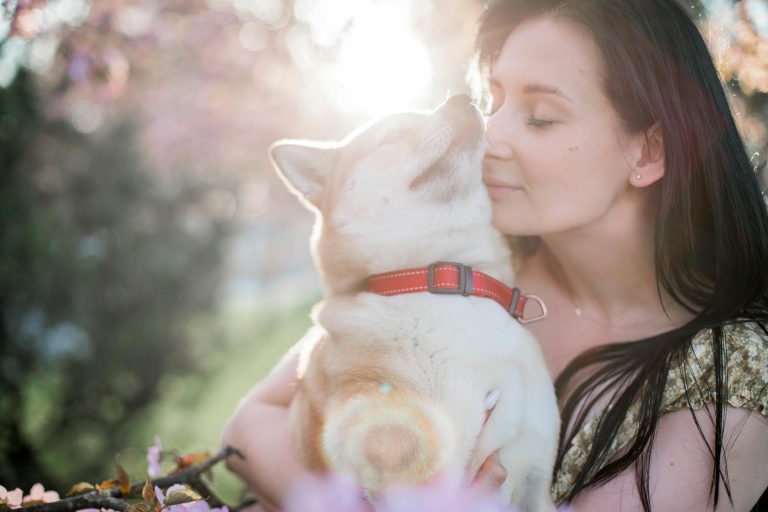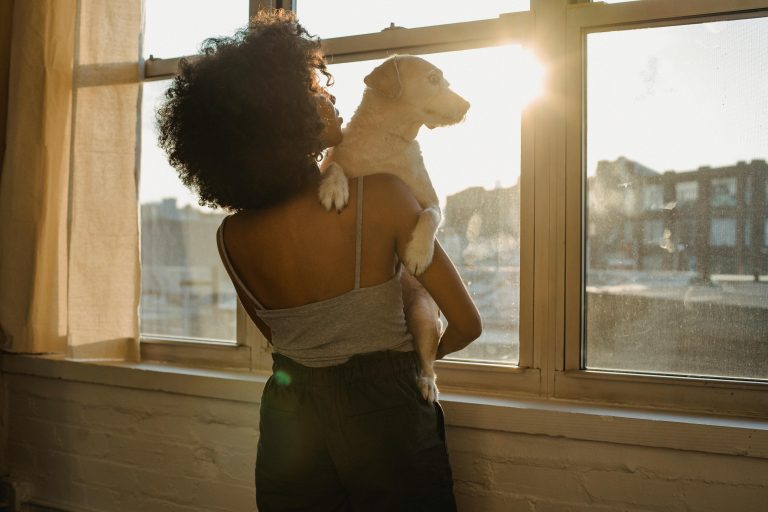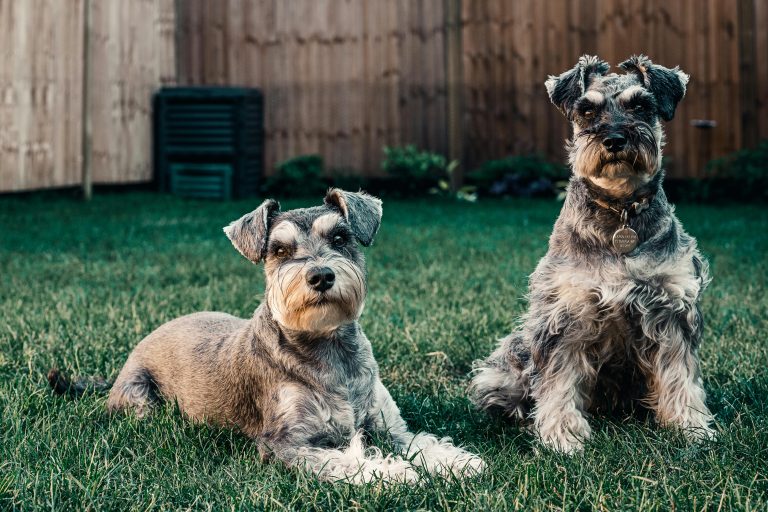How do you know if a dog loves you? | A Guide to Strengthening Your Bond
Introduction
Dogs, often referred to as man’s best friend, possess an incredible capacity for love and affection. As devoted companions, they express their emotions in various ways. Understanding the signs of a dog’s love goes beyond the wagging tail and wet nose. In this article, we’ll delve into the intricate ways dogs communicate their affection, allowing you to deepen your connection with your furry friend.

Canine Body Language
Reading the signs of a wagging tail
A wagging tail is a classic sign of a happy dog, but not all tail wags are the same. Pay attention to the speed, height, and direction, as they convey different emotions.
Expressive ears and what they signify
A dog’s ears are incredibly expressive. Perked ears show interest, while flattened ears indicate fear or submission. Understanding these cues enhances your ability to connect with your canine companion.
The importance of eye contact in canine communication
Dogs use eye contact to establish a connection. A loving gaze demonstrates trust and affection, strengthening the bond between human and dog.
Physical Affection
Analyzing a dog’s response to petting
While most dogs enjoy being petted, their response can reveal much about their feelings. Look for signs of relaxation, such as a lowered body or wagging tail, to gauge their level of comfort.
Signs of genuine love through cuddling and leaning
Cuddling and leaning are intimate gestures that demonstrate a deep bond. Dogs often lean into their owners for comfort, showcasing a sense of security and love.
Vocal Communication
Decoding different barks and their meanings
Dogs use barks to communicate various needs and emotions. Understanding the nuances of different barks allows you to respond appropriately and strengthen your connection.
Understanding the nuances of whining and howling
Whining and howling can convey distress or a desire for attention. Recognizing the context behind these vocalizations helps address your dog’s emotional needs.
Behavioral Observations
Recognizing playful behavior as a sign of affection
Playfulness is a clear indication of a happy and affectionate dog. Engaging in interactive play fosters a sense of joy and reinforces the bond between you and your pet.
Assessing a dog’s loyalty and protective instincts
A loyal dog will display protective behaviors. Recognize and appreciate these instincts as expressions of love and devotion.

Olfactory Cues
Exploring the role of scent in canine emotions
Dogs perceive the world through scent, and their unique scent-marking behaviors signify familiarity and connection. Understanding these olfactory cues provides insight into your dog’s emotional state.
How a dog’s sense of smell reflects their connection with you
Your scent holds immense importance for your dog. They associate your smell with comfort and safety, solidifying the emotional bond between you and your furry friend.
Reciprocity in Training
The importance of positive reinforcement in building trust
Positive reinforcement during training creates a positive association with you in your dog’s mind. This trust forms the foundation for a loving relationship.
How a dog’s obedience demonstrates affection
A well-trained dog reflects the time and effort invested in building a strong connection. Obedience is a tangible expression of your dog’s love and respect for you.
Spending Quality Time
The impact of shared activities on the human-dog relationship
Quality time strengthens the bond between you and your dog. Whether it’s a walk, playtime, or simple companionship, these shared moments foster love and connection.
How companionship contributes to a dog’s love
Dogs are social animals that thrive on companionship. Your presence and engagement fulfill their emotional needs, reinforcing the love they feel for you.
Changes in Behavior
Recognizing shifts in a dog’s behavior as a reflection of emotions
Changes in behavior can indicate shifts in your dog’s emotional state. Being attuned to these changes allows you to address any concerns promptly and nurture a positive relationship.
Addressing sudden changes in affectionate behavior
Understanding the potential causes of sudden changes in affection helps maintain a supportive and loving environment for your dog.
Health Indicators
How a dog’s well-being correlates with their expression of love
A healthy dog is a happy dog. Regular veterinary care, a balanced diet, and ample exercise contribute to your dog’s overall well-being and, consequently, their ability to express love.
Detecting signs of distress and addressing them promptly
Dogs may express love less openly when distressed. Being vigilant about changes in behavior and addressing potential health issues ensures a happy and affectionate relationship.
Bonding Over Routine
Establishing routines as a foundation for trust and love
Dogs thrive on routine, finding comfort in predictability. Establishing consistent daily routines fosters a sense of security and strengthens the bond between you and your furry friend.
The comfort dogs find in predictability
Predictable routines create a stable environment, allowing your dog to feel secure and loved. This comfort contributes to a deeper emotional connection.
The Role of Positive Reinforcement
Reinforcing love through rewards and positive experiences
Positive reinforcement, such as treats and praise, reinforces the love your dog feels for you. These gestures create positive associations, enhancing the emotional bond.
How praise strengthens the human-dog connection
Verbal praise is a powerful tool in reinforcing love. Expressing your affection through kind words strengthens the emotional connection between you and your dog.
Understanding Past Trauma
Addressing the impact of a dog’s previous experiences on their ability to express love
Dogs with past trauma may require additional patience and understanding. Creating a safe and supportive environment allows them to overcome past challenges and express love more freely.
Providing a secure environment for emotional healing
A secure and loving environment encourages emotional healing in dogs with a history of trauma. Your patience and compassion play a crucial role in their journey toward expressing love.
Signs of Unconditional Love
Identifying actions that showcase a dog’s unwavering devotion
Unconditional love is evident in actions such as constant companionship, loyalty, and a strong desire to please. Recognizing these signs deepens the emotional connection between you and your dog.
How loyalty transcends challenges and obstacles
A loyal dog remains devoted through thick and thin. Understanding and appreciating their loyalty enhances the profound bond that exists between you and your furry friend.
Conclusion
In conclusion, understanding how a dog expresses love is key to fostering a strong and meaningful connection. From body language to shared activities, each aspect contributes to the unique bond between humans and dogs. Paying attention to these signals allows you to reciprocate the love and strengthen the unbreakable bond you share with your four-legged companion.




Leave a comment